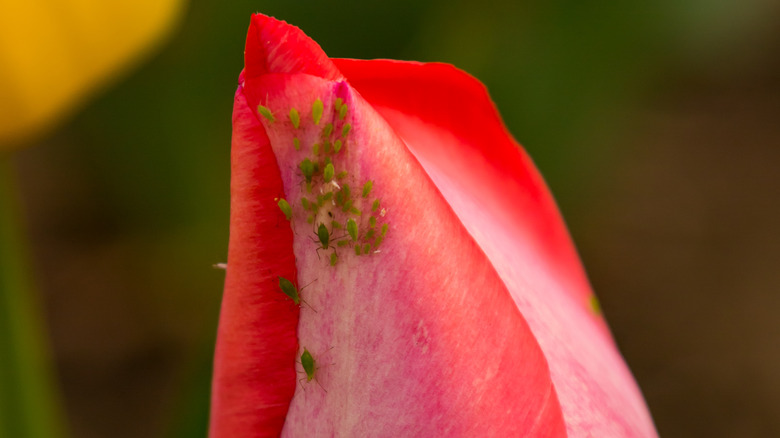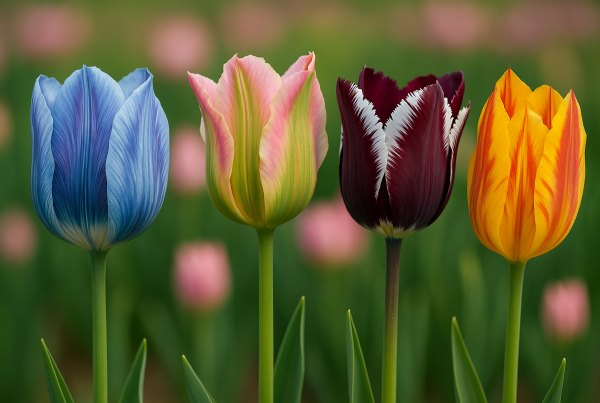Tulip Triumph: Navigating Common Pests and Diseases in UK Gardens
Tulips are a cherished staple in many UK gardens, their vibrant blooms marking the arrival of spring with a dazzling display of colour and vitality. Yet, these delicate flowers are vulnerable to the challenges posed by common pests and diseases that can diminish their splendour. From the infamous aphids that drain their energy to the pervasive tulip fire disease and basal rot, tulips face numerous adversaries in our temperate climate. In this guide, we will thoroughly explore the identification of these issues, investigate their causes, and present a variety of prevention and treatment strategies tailored specifically for UK gardeners. Whether you’re a novice with budding enthusiasm or a seasoned horticulture aficionado, join us on this journey through the complexities of tulip care, ensuring your garden remains vibrant and flourishing.
Identifying Common Pests and Diseases
Organic Pest Control Methods
Organic pest control methods provide eco-friendly solutions for managing tulip pests. Companion planting is a highly effective approach; integrating tulips with aromatic herbs like lavender or garlic can naturally repel pests. Encouraging beneficial insects such as ladybirds and lacewings, which are natural predators of aphids, helps maintain a balanced ecosystem in your garden. To deter slugs and snails, create barriers using copper tape or crushed eggshells around tulip beds. Neem oil, a natural insecticide, can be applied to tulips to combat various pests without impacting beneficial insects. Conduct regular plant inspections and manually remove pests to prevent infestations. Maintaining good garden hygiene by clearing away debris and fallen leaves reduces hiding spots for pests. Lastly, enhancing soil health through composting and proper watering techniques can bolster tulips’ natural defences against pests and diseases.

Recognising Common Issues
Basal Rot Concerns
Basal rot, caused by the fungus Fusarium oxysporum, poses a significant threat to tulip bulbs. This disease presents as a soft, brown rot that typically begins at the base of the bulb and progresses upwards. Affected tulips may exhibit poor growth or fail to emerge completely. To manage and prevent basal rot, ensure there is excellent drainage in your planting area, as excessive moisture significantly heightens the risk of fungal infections. Avoid planting tulips in areas with a history of basal rot issues. If any signs of rot appear, remove and destroy affected bulbs immediately to halt the spread of the fungus. Additionally, applying a fungicide treatment to the soil before planting can further safeguard bulbs from infection. Opting for disease-resistant tulip varieties and rotating planting locations annually can help reduce the occurrence of basal rot.
Tulip Viruses Unveiled
Tulip viruses, particularly the Tulip Breaking Virus (TBV), present a considerable danger to these cherished spring blooms. TBV causes dramatic colour patterns in tulip petals, once esteemed during the 17th-century ‘Tulip Mania’ but now recognised as harmful to plant health. Infected tulips display mottled or streaked petals, stunted growth, and distorted leaves. The virus spreads primarily through aphids, potentially devastating entire tulip beds swiftly. Other viruses, such as the Tobacco Rattle Virus, can produce similar symptoms. Regrettably, there is no cure for viral infections in tulips, making prevention essential. Gardeners should promptly remove and destroy infected plants to avert spread. Controlling aphid populations regularly and maintaining good garden hygiene are crucial preventive measures. When purchasing bulbs, select certified virus-free stock from reputable suppliers to minimise the introduction of viruses to your garden.

Effective Tulip Care
UK Gardening Tips and Tricks
In the UK’s temperate climate, successful tulip cultivation requires specific strategies. Plant bulbs in late autumn, typically in November, to ensure proper cold stratification. Choose well-draining soil enriched with organic matter for robust growth. Position bulbs in a sunny spot to maximise blooming potential, as tulips thrive with ample sunlight. Avoid overwatering; tulips prefer slightly dry conditions once established, and overly wet soil can lead to rot. After blooms fade, allow the foliage to die back naturally—this process allows the bulb to store energy for the next growing season. Mulching with organic material like shredded bark can help retain soil moisture and suppress weeds. Regularly deadhead spent flowers to redirect energy back to the bulb instead of seed production. By following these practices, your tulip garden will not only appear spectacular but will also be resilient against the vagaries of the UK weather.







